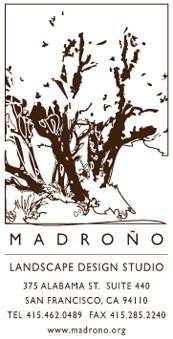 A heavenly light shines this evening 800 feet above San Francisco Bay. Closer inspection reveals six strings of bright white bulbs hung from a 30-foot pole atop the peak of Angel Island, a tree-shaped beacon lit for the holidays. The architects of this symbolic arbor may have meant to invoke the traditional Christmas conifer or star of Bethlehem, but the display could as easily commemorate the coast live oak communities that survive here despite the infernal meddling of mankind.
A heavenly light shines this evening 800 feet above San Francisco Bay. Closer inspection reveals six strings of bright white bulbs hung from a 30-foot pole atop the peak of Angel Island, a tree-shaped beacon lit for the holidays. The architects of this symbolic arbor may have meant to invoke the traditional Christmas conifer or star of Bethlehem, but the display could as easily commemorate the coast live oak communities that survive here despite the infernal meddling of mankind.
In the ice age, when sea level was several hundred feet lower, San Francisco Bay was a dry, oak-studded river valley. The Sacramento and San Joaquin deltas ran through the Golden Gate and across the coastal plain to the ocean somewhere beyond the Farallons. One century or another, geologic forces thrust up this small hillock. The ice-age glaciers melted and the oceans rose, making the valley a bay and the knoll an island.
Thus separated from the mainland for the last 8,000 years, these distinctive mountain groves of Quercus agrifolia provide a window into California's past. Coast live oak covers Angel Island's north- and east-facing hills, where the sun is less strong and the water more plentiful. Thick limbs of hoary trees, gnarled biceps of the earth, rise from the slope in twisted postures, holding up a canopy that shelters innumerable birds and a vigorous population of shade-tolerant plants growing below, bright inspirations for gardeners in sun-challenged yards.
January in the oak woodlands brings hundreds of baby ferns growing from the spores of last year, greening steep wet rock faces. Among more common varieties like goldback (Pentagramma triangularis), coastal woodfern (Dryopteris arguta), and sword fern (Polystichnum munitum), Angel Island contains California maidenhair fern (Adiantum jordanii), a horticulturally valuable species. The maidenhair creeps along moist embankments and rock crevices, with fronds deeply lobed by stout fan-shaped segments like the leaves of a ginkgo tree. Small enough never to overwhelm in the garden, but big enough to draw compliments, this fern easily transforms a "problem corner" into a "primitive specimen garden."

